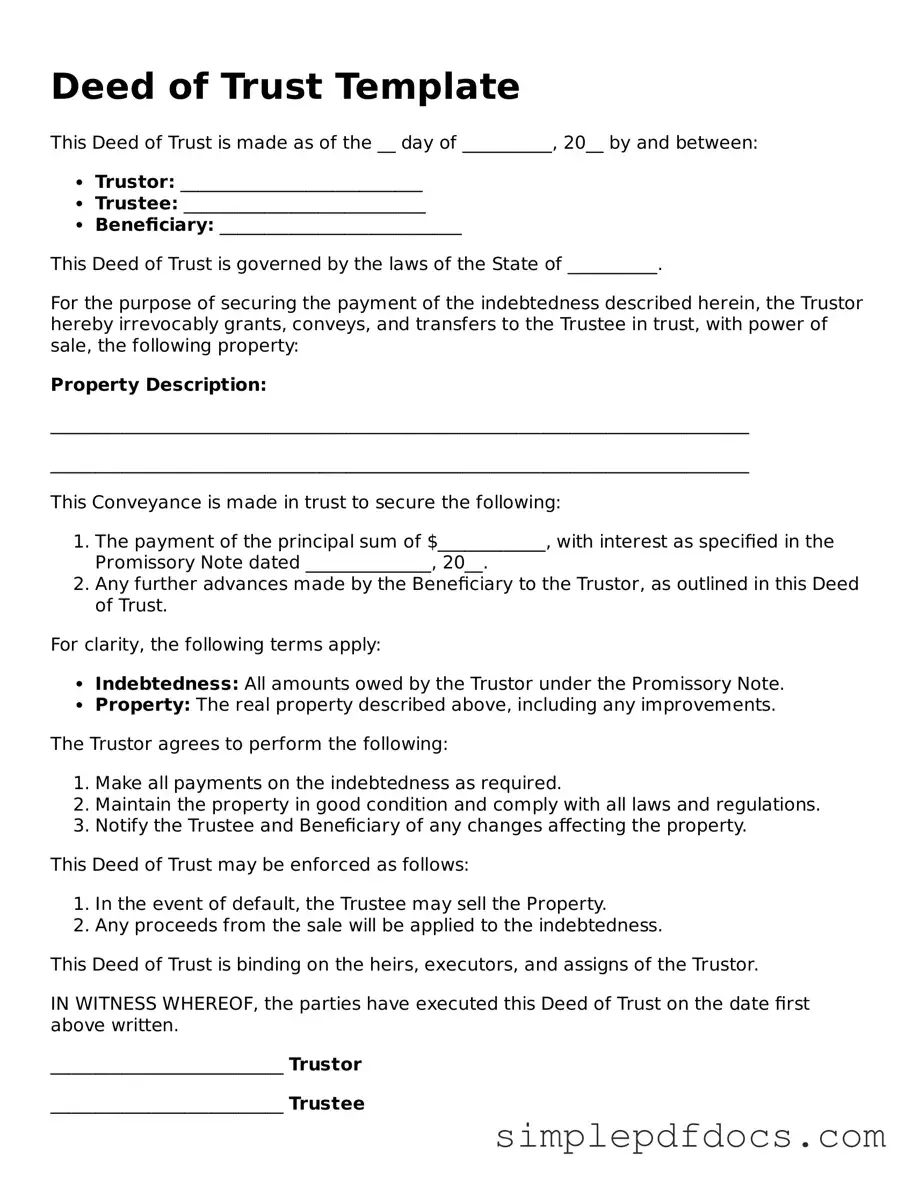When navigating the world of real estate transactions, understanding the Deed of Trust form is essential for both borrowers and lenders. This important document serves as a security instrument that protects the lender's investment while providing the borrower with the necessary funds to purchase a home or property. In essence, it outlines the terms of the loan agreement, including the amount borrowed, the interest rate, and the repayment schedule. Additionally, the Deed of Trust designates a third party, known as the trustee, who holds the legal title to the property until the loan is fully repaid. Should the borrower default on the loan, the trustee has the authority to initiate foreclosure proceedings, allowing the lender to recover their investment. This form also includes critical information about the property itself, such as its legal description, ensuring clarity and transparency in the transaction. Understanding these key components can empower individuals to make informed decisions, whether they are buying their first home or refinancing an existing mortgage.
